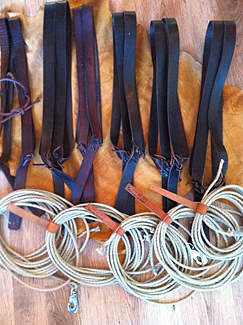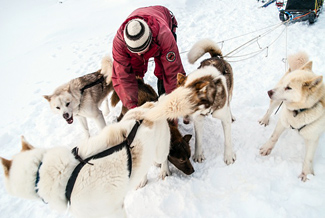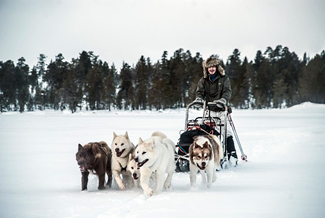From the Editor... Turning Dreams into Reality
In the News
Return of the Far Fur Country Project Update
Another Inuktitut Word for Snow
A Condo for Dogs: The Evolution of Our Dog Houses
Antiquity of the Inuit Sled Dog Supported by Recent Ancient DNA Studies
A Different Type of Sledding
Astrup’s Harness: A personal voyage to understand an old sealskin sled dog harness, Part 2
Movie Review: The Stories of Tuktu: Tuktu and His Eskimo Dogs
IMHO.... Why do we do this?
Navigating This Site
Index of articles by subject
Index of back issues by volume number
Search The Fan Hitch
Articles to download and print
Ordering Ken MacRury's Thesis
Our comprehensive list of resources
Defining the Inuit Dog
Talk to The Fan Hitch
The Fan Hitch home page
Editor: Sue Hamilton
Webmaster: Mark Hamilton
The Fan Hitch,
Journal of the Inuit Sled Dog, is
published four times a
year. It is available at no cost online
at: https://thefanhitch.org.
The Fan Hitch welcomes your letters, stories, comments and suggestions. The editorial staff reserves the right to edit submissions used for publication.
Contents of The Fan Hitch are protected by international copyright laws. No photo, drawing or text may be reproduced in any form without written consent. Webmasters please note: written consent is necessary before linking this site to yours! Please forward requests to Sue Hamilton, 55 Town Line Rd., Harwinton, Connecticut 06791, USA or mail@thefanhitch.org.
This site is dedicated to the Inuit Dog as well as related Inuit culture and traditions. It is also home to The Fan Hitch, Journal of the Inuit Sled Dog.
The Fan Hitch welcomes your letters, stories, comments and suggestions. The editorial staff reserves the right to edit submissions used for publication.
Contents of The Fan Hitch are protected by international copyright laws. No photo, drawing or text may be reproduced in any form without written consent. Webmasters please note: written consent is necessary before linking this site to yours! Please forward requests to Sue Hamilton, 55 Town Line Rd., Harwinton, Connecticut 06791, USA or mail@thefanhitch.org.
This site is dedicated to the Inuit Dog as well as related Inuit culture and traditions. It is also home to The Fan Hitch, Journal of the Inuit Sled Dog.
 Six new leather harnesses along with hemp rope tuglines photo: J.W.Moe Astrup’s Harness: A personal voyage to understand an old sealskin sled dog harness, Part 2 by Jonas Warme Moe Lorenskog, Norway Norway’s
Eivind Astrup’s (1871-1895) way of thinking
about polar
exploration and his equipment were, I believe,
ahead of his time. Of
course, his early death put an abrupt end to
everything, and we'll
never really know how far he might have reached.
His harnesses though
are still beautiful, and as far as I know there
are none just like them.
J.W.M.
|
So, two years ago I started a project that soon grew way bigger than I ever imagined it would become. From a simple leather craft project just to see if I could do it, the Astrup harness venture grew into something more – a mission to understand leather harnesses for sled dogs and along with it the bonus of realizing just how important Eivind Astrup’s contribution to Norwegian polar history has really been.
Through The Fan Hitch I got in touch with a fellow Norwegian who wanted to test the harness with me. His name is Gisle Uren owner of Kennel Rennfokk and eight stunningly beautiful and powerful Greenland Dogs. I bought a new batch of leather and 40 meters (44 yards) of hemp rope and got to work.
What worried me most in this part of the process was if my knots would hold, and if I had copied them correctly from Astrup’s version. Due to the condition of the old harness, it was difficult to see which knots Astrup had used to tie the harness together. Loosening one of the old knots from these museum pieces to find out was of course out of the question! So another period of research ensued, followed by testing...lots of testing. However, I soon realized that I was the only one who would really care and that whatever knots I used really would not have a huge impact on how the harness would hold function. In the end I just tied them together. Only a live test on working dogs would show if my guess was correct or not.
 Gisle harnessing the dogs with Astrup's harness for the first time photo: J.W Moe |
After having fitted and adjusted the harness for each of Gisle’s dogs, we were ready for testing. We decided to assess the harnesses on Femunden, a great lake nearby Gisle’s home town of Røros, in the mountains of Norway. Femunden is large. It stretches for over 200 square kilometers (77 square miles) and would give us enough space to simulate the great ice planes of Greenland. Laying out all the harnesses and tuglines became a hallmark for me. Finally, after two years of work, I was going to find out at least something about Astrup’s harness.
Gisle harnessed his dogs and, although used to the tandem formation, they ran in a fan hitch as if they hadn’t done anything else. Of course, the fact that a sled dog pulls is not really a proof that a harness works. They would probably do that harnessed to whatever. But still the impression was the harnesses fit the dogs very well. And after our 22 kilometer (13.5 mile) long trip that day, it seems that at least some of my careful guesses about leather harnesses are plausible:
1) Prior to the test I guessed that the dog’s body would shape the leather slightly, making the fit even better to that individual dog. That seems to have been the case. Only thorough testing over time will show just how big this effect really is.
2) When talking to mushers about the project, what most people had against a leather harness was the belief that the cold weather would make the leather hard and stiff and thus not very comfortable for the dogs. On the day of our testing, it was relatively warm, about -10 degrees Celcius (14 Farenheit). And at least at this temperature our test showed that the dogs’ body temperature kept the leather soft and flexible. Once removed from the dogs, the harnesses became stiffer (although not really hard) within seconds.
What Astrup complained most about wasn’t any of these things, but the fact that when given the chance, the dogs ate their harnesses. When we also take into consideration the time and energy needed to get hold of and prepare the leather for harnesses – it is not surprising that even Inuit were searching for other harness-materials. My point in all of this is that our modern view that leather is outdated and has been surpassed by nylon might not be entirely justified. I think it was more to do with the fact that along the way we just lost our understanding and knowledge on how to use leather in the best possible way. Today's tanning and preparation processes result in leather with extremely high quality and durability. (Just compare leather boots now and 100 years ago.) I often wonder how leather harnesses would have looked and performed today if they had gone through the same technological development for the last hundred years as did sleds and other equipment.
(Aside: An interesting fact here is that even with my sharp and modern leather strap cutter and knives, I did not manage to make the straps as thin as those used for Astrup’s harness. The difference was tiny - maybe only half of a millimeter, but again, I found myself very impressed by the techincal skill and accuracy of the Astrup harness-maker. To me, it’s just another example of how new tools and fabrics not necessarily always are better than the old, just different.)
 My first sled journey! Photo: G. Uren |
The Astrup harness project has given me a better understanding of this remarkable historical artifact. And it has also resulted in many new friends, walking on both two and four legs! I feel truly grateful and wish to thank everyone who has helped me achieve my goal.
Did I ever find out who made the harness? Not really. The facts still remain the same. What we know is this: Eivind Astrup brought them home from Greenland in 1894, and they are made of seal skin. What do I think? In my heart – and this is not possible to justify or prove in any way – the harness is the collaboration of Astrup and his Inuk friend Kolotengva. Before their 1300 kilometer (800 mile) sledge journey during the second Peary expedition, they made a sledge together and Astrup taught Kolotengva to ski. They were both highly capable men so surely they discussed harness design as well. In a book showing pages from Astrup’s diary I saw one of his drawings with this harness in it.
So to me, that is the truth I choose to believe.
In the future, my Eivind Astrup leather harness adventure can be followed at: eivindandkolotengva.wordpress.com.
I wish to thank Gisle Uren and Anne Nørbech, their wonderful kids and of course all the dogs of Kennel Rennfokk. Thanks also to Kent Jensen and the Jorn Jensen Leather Shop for great service, knowledge and high quality leather.
Read Astrup’s Harness, A personal voyage to understand an old sealskin sled dog harness, Part 1 here.